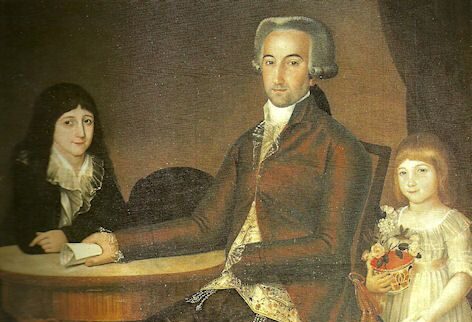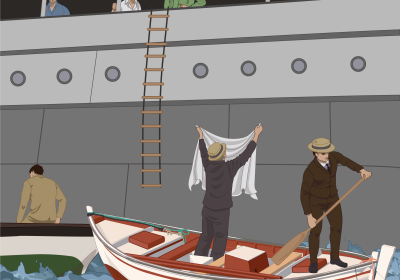On July 11 we celebrated the anniversary of the creation of the Supreme Board of the Canary Islands, linked to the historical events that took place in Spain in 1808 and to which a square in La Laguna has been dedicated.
For those who like a leisurely stroll through the stately city of Los Adelantados, it is not inconsiderable to approach the secluded square of the Supreme Board, located at the end of Calle San Agustin, in former times known as Calle Real.
The old small square formerly called “Juego de los Bolos” (Game of Bowls) was urbanised in 1906. In the past, among other games, bowls was played here, using cannon balls as throwing objects. But since 1903 the square’s name was changed to its present name to gloriously frame the event that it represents.

To understand its meaning, what better than to literally transcribe the commemorative plaque with which the City Council outlines its historical significance. The marble plaque that distinguishes it reads as follows:
“The CITY COUNCIL OF THE CITY OF LA LAGUNA, on the first centenary of the war of independence, dedicates this plaque to the heroic loyalty of the Archipelago and the patriotism of the illustrious men who, assuming all the powers of the island, exalted the name of the Canary Islands” 11th July 1808.
Undoubtedly, many of the passers-by whose carefree steps have brought them here will not have enquired about its title; others, however, more awake, more interested, will have pondered the meaning of its name. For all of them we would like to give a brief outline of the historical roots of its name:
The year 1808 must be considered, without any ambiguity whatsoever, as the key date for the breakdown of the institutional system of the Old Regimen in Spain.

The Treaty of Fontainebleau, signed in 1807 by Manuel Godoy, the favourite of King Charles IV of Spain, and the French Emperor Napoleon Bonaparte, allowed Napoleon’s troops to pass through Spain for the invasion of Portugal. This led to the outbreak of the War of Independence the following year in 1808, following the departure of the royal family to Bayonne, the uprising in Madrid on 2 May and the subsequent enthronement of Joseph I Bonaparte as King of Spain.
Out of the power vacuum caused by these events, the provincial supreme assemblies spontaneously emerged. In the Canary Islands, under the presidency of the 6th Marquis of Villanueva del Prado, Alonso de Nava y Grimón, the Supreme Board of the Canary Islands was set up in the city of La Laguna on 11 July 1808, dismissing Captain General Fernando de Cagigal, Marquis of Casa Cagigal, with the intention of governing the archipelago until foreign domination of the homeland had ceased.
Two months later in Aranjuez, the Supreme Central Government Board was formed, made up of delegates of the assemblies that had formed the Spanish provinces; this body exercised executive and legislative powers until its dissolution in 1810.
This is also the year when the Council of Regency of Spain and the Indies was created, responsible for organising the Cortes of Cádiz, which met in Cadiz as from 24 February 1811. They were the drafters of the first Spanish Constitution, popularly known as “La Pepa” because of the day it was proclaimed on 19 March 1812, Saint Joseph’s Day.
Although it is anecdotally recorded that when the invading army was at the gates of Cádiz and besieging it, the Cortes sent a letter to the Supreme Board of La Laguna, wishing to transfer the capital of unoccupied Spain to the City. The mandate was without effect insofar as the French never occupied Cádiz. Fact is that the constitution of the Supreme Board of La Laguna had the approval of the Island Councils except for that of Gran Canaria, which opted to set up a Permanent Council as an independent body.
Manuel Hernández González, professor of American history at the ULL, in his book La Junta Suprema. Canarias y la emancipación americana, deals with the project of the Supreme Board of the Canary Islands and the elites of Tenerife to set themselves up as an independent republic under British protectorate. This conflict of interests between the oligarchies of Tenerife and Gran Canaria led to the well-known “Pleito Insular”, especially when the Cortes of Cádiz granted the capital of the newly created Canary Islands Province to the city of Santa Cruz de Tenerife.
War of Independence, political conflicts, hegemony, struggles of interests, insular litigation… In the aforementioned plaza of La Laguna, next to the marble plaque stands the bust of Alonso de Nava y Grimón. What a pleasure it would be to hear him personally talk about his experiences, but as this is impossible, we must make do with what history tells us.
Translation: Conny Melkebeek
Through this publication, APIT Tenerife echoes the research of its associates and supports the generation of knowledge by its associated tourist guides. However, the opinions expressed by the authors of the articles do NOT reflect in any way the position of the Association. APIT Tenerife is an apolitical, professional and inclusive entity that promotes Canarian heritage of any kind. If you want to contribute elements to the debate on the topics discussed here, we invite you to contact the author whose contact details appear in the signature of the article and in the list of associated guides.





¡Felicidades Mauro! Como siempre el ritmo de tu prosa, le lleva a uno, a creer que está en medio de la trama.